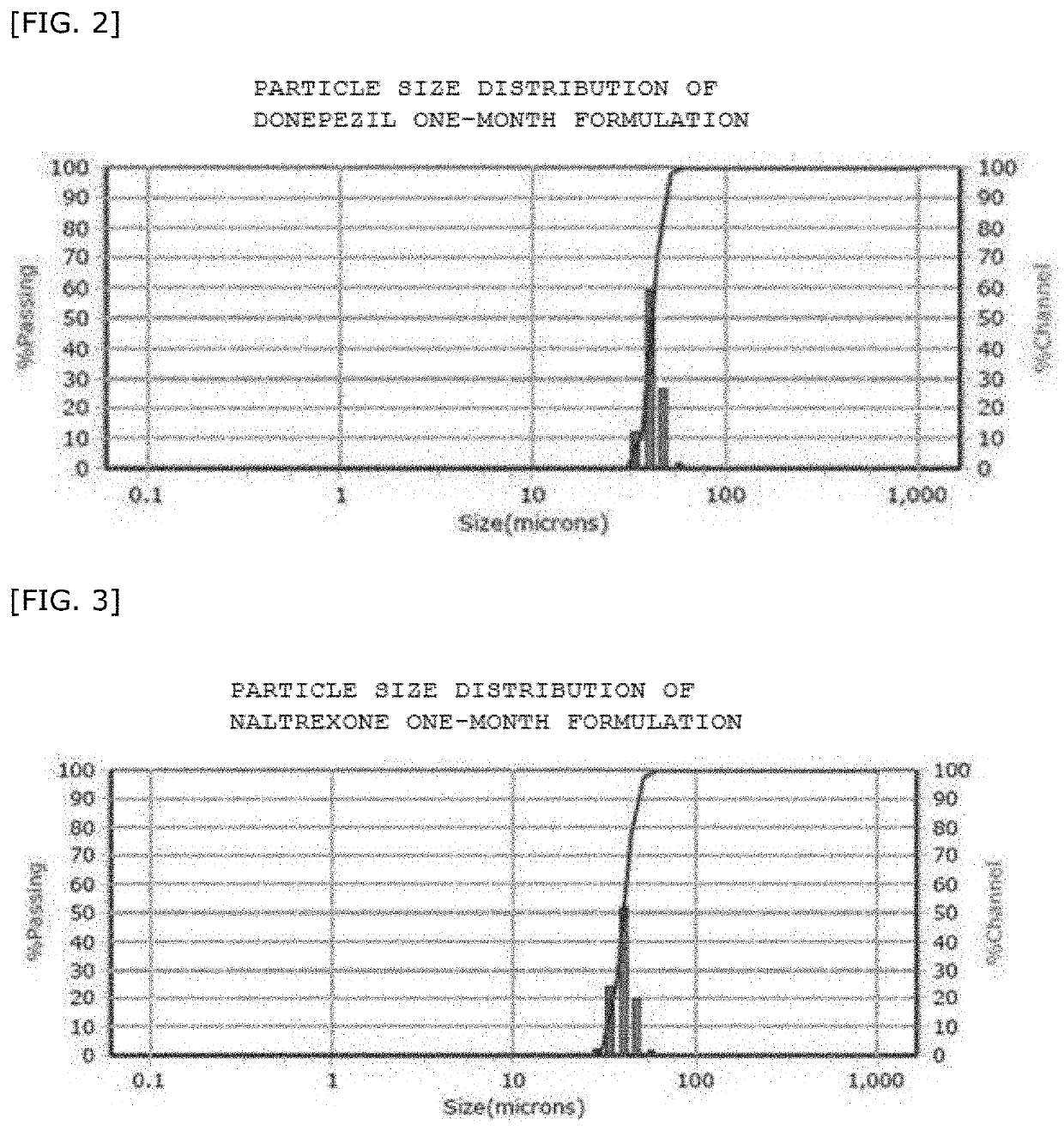Sustained-release microparticles for sustained release of drug
a microparticle and drug technology, applied in the direction of heterocyclic compound active ingredients, organic active ingredients, peptide/protein ingredients, etc., can solve the problems of incomplete control, inability to maintain the drug release rate, and inability to uniformly size the particles, etc., to achieve stable release pattern
- Summary
- Abstract
- Description
- Claims
- Application Information
AI Technical Summary
Benefits of technology
Problems solved by technology
Method used
Image
Examples
preparation example
oparticles
preparation example 1a
Preparation of Microparticles Containing One-Month Dose of Finasteride
[0111]A first mixture was prepared by dissolving 56.0 mg of polylactide-co-glycolide (PLGA) and 28.0 mg of Finasteride in 317 mg of dichloromethane (NF). At this time, polylactide-co-glycolide in the first mixture was contained at a ratio of 12.5% (w / w), and polylactide-co-glycolide and Finasteride were used at a weight ratio of 2:1.
[0112]48 mg of polyvinyl alcohol as a surfactant was mixed with water to prepare a second mixture containing 0.5% by weight of polyvinyl alcohol.
[0113]The first mixture and the second mixture were injected into a microchannel formed on a silicon wafer to flow. At this time, the microchannel used was a 120 / 80 μm orifice 7-channel chip. Further, in order to flow the first mixture and the second mixture at respectively different flow rates, the first mixture was flowed under a pressure condition of 450 mbar, and the second mixture was flowed under a pressure condition of 2,100 mbar. The t...
preparation example 1b
Preparation of Microparticles Containing a Three-Month Dose of Finasteride
[0119]As a biodegradable polymer compound, a first mixture was prepared by dissolving a polymer mixture in which polylactide-co-glycolide (PLGA) and polylactide (PDL02A) had been mixed at a 1:1 ratio and 84 mg of Finasteride in dichloromethane. At this time, the polymer mixture in the first mixture was contained at a ratio of 12.5% (w / w), and the weight ratio of the polymer mixture and Finasteride was 2:1.
[0120]Polyvinyl alcohol as a surfactant was mixed with water to prepare a second mixture containing 0.5% by weight of polyvinyl alcohol.
[0121]The first mixture and the second mixture were injected into a microchannel formed on a silicon wafer to flow. At this time, the microchannel used was a 120 / 80 μm orifice 7-channel chip. Further, in order to constantly flow the first mixture and the second mixture at respectively different flow rates, the first mixture was flowed under a pressure condition of 500 mbar, a...
PUM
| Property | Measurement | Unit |
|---|---|---|
| particle size analyzer | aaaaa | aaaaa |
| diameter | aaaaa | aaaaa |
| diameter | aaaaa | aaaaa |
Abstract
Description
Claims
Application Information
 Login to View More
Login to View More - R&D
- Intellectual Property
- Life Sciences
- Materials
- Tech Scout
- Unparalleled Data Quality
- Higher Quality Content
- 60% Fewer Hallucinations
Browse by: Latest US Patents, China's latest patents, Technical Efficacy Thesaurus, Application Domain, Technology Topic, Popular Technical Reports.
© 2025 PatSnap. All rights reserved.Legal|Privacy policy|Modern Slavery Act Transparency Statement|Sitemap|About US| Contact US: help@patsnap.com



